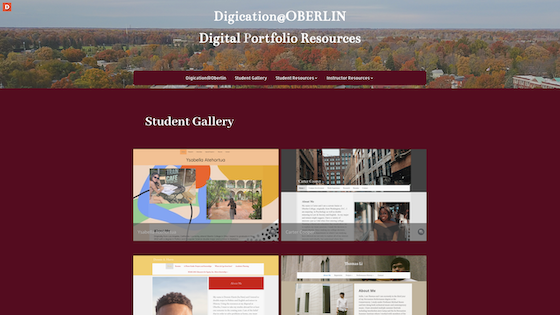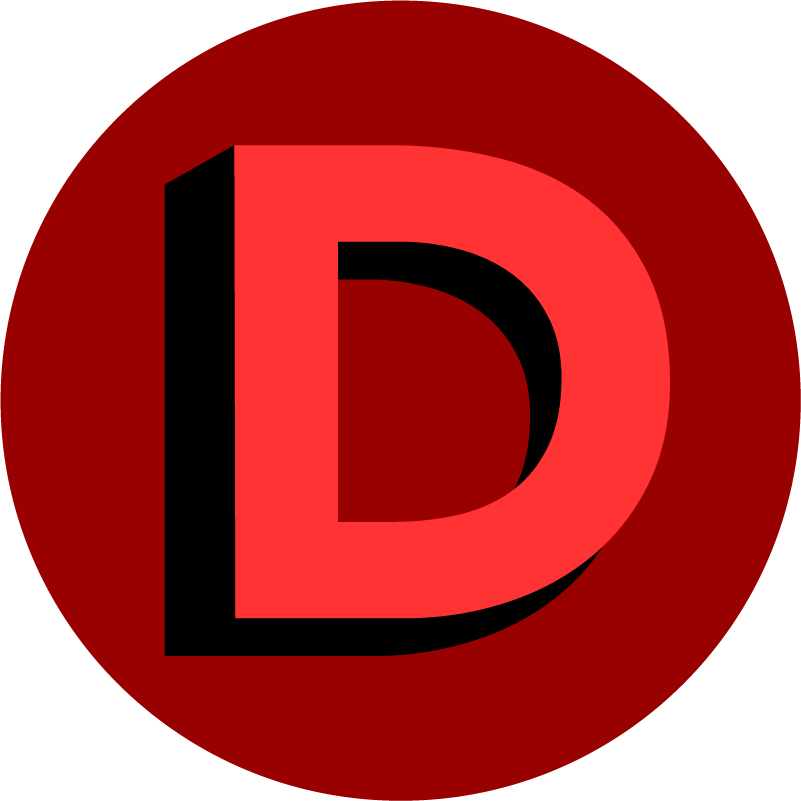Abe Reshad was on the Digication Scholars Conversations
In a world where digital innovation effortlessly integrates with established educational frameworks, ePortfolio emerges as a revolutionary tool in liberal arts education. This transformative approach redefines traditional learning by blending creativity with technology to foster a digital maker space. Students won’t just absorb knowledge; they can now be the architects of their intellectual journey.
Our Digication Scholars Conversations Podcast guest, Abe Reshad, Director of Language Technology and Academic Support at Oberlin College, shines a light on how ePortfolio preserves and showcases academic achievements and enhances problem-solving skills within liberal arts education.
The Need For ePortfolios
The transition to ePortfolios at Oberlin College represents more than a mere shift to online learning; it symbolizes a more profound transformation in educational approaches, emphasizing student-centered learning, digital literacy, and the development of problem solvers adept in critical thinking – a cornerstone of liberal arts education.
Reshad vividly captures the essence of ePortfolios, describing them as digital maker spaces where students curate and showcase their academic and personal journeys. These platforms are not just repositories of work but dynamic spaces that encourage reflection, creativity, and the integration of diverse experiences. The digital portfolio office, as Reshad mentions, parallels the concept of an innovation lab, offering a safe space for students to showcase their stories and insights.
Delving deeper, Reshad talks about the evolution of language labs from traditional audio-visual rooms to modern digital maker spaces. These spaces are equipped with cutting-edge technologies such as 3D printers and green screens, empowering students to unleash their creativity and engage with content in innovative ways. The language lab’s metamorphosis reflects a broader trend in education: the move toward experiential and project-based learning, where students are creators, not just consumers of knowledge.
ePortfolios and Liberal Arts: A Synergistic Relationship
The integration of ePortfolios in liberal arts education is particularly impactful. Liberal arts, known for its focus on broad, holistic education, finds a perfect partner in ePortfolios.
“ePortfolios encourage a fusion of ideas, much like a melting pot of creativity and analysis.” – Abe Reshad.
These platforms allow students to integrate diverse academic interests, extracurricular activities, and personal reflections, enriching their educational experience. The synergy between ePortfolios and liberal arts lies in their common goal: to foster well-rounded, reflective, and engaged individuals.
Challenges and Opportunities
The journey hasn’t been without challenges. Reshad points out the initial hurdles in integrating new technologies like ePortfolios into traditional educational frameworks. Convincing faculty and students to embrace these changes required demonstrating the tangible benefits of these platforms in enhancing learning and engagement.
Looking ahead, the potential of ePortfolios in reshaping education is immense. As Reshad suggests, these platforms can play a pivotal role in adapting education to the evolving digital landscape. They offer a window into the future of learning, where technology and human experience converge to create a rich, multifaceted educational journey.
Abe Reshad’s insights extend to the core of liberal arts education—cultivating problem-solving skills. He emphasizes that ePortfolios are more than digital spaces; they are incubators for critical thinking and problem-solving. By engaging with these platforms, students learn to navigate complex problems, analyze information critically, and articulate solutions creatively.
ePortfolios: A Tool for Critical Thinking and Problem-Solving
The discussion reveals that ePortfolios are not just about showcasing work; they’re about the process—the critical thinking that goes behind each piece. Students using ePortfolios continually engage in self-reflection, a crucial aspect of being an effective problem solver. Reshad notes that this reflective practice, encouraged by ePortfolios, is integral to developing a nuanced understanding of complex issues, a skill highly valued in liberal arts education.
As highlighted by Reshad, one of the most compelling aspects of ePortfolios is their ability to blend various disciplines. This interdisciplinary approach is at the heart of liberal arts education, fostering a holistic perspective essential for practical critical thinking. Students learn to draw connections between disparate fields, enriching their ability to approach problems from multiple angles.
The conversation also touches on the role of ePortfolios in preparing students for real-world challenges. ePortfolios provide a safe yet realistic environment for students to hone these skills by simulating scenarios that require critical thinking and problem-solving. Reshad points out that in today’s rapidly changing world, the ability to solve complex problems is invaluable, and ePortfolios play a crucial role in developing this competency.
The link between ePortfolios and career success is crucial in the discussion. Reshad illustrates how ePortfolios help students become not just learners but adept problem solvers, a trait highly sought after in the professional world. By curating diverse experiences and reflections, students demonstrate their critical thinking and problem-solving skills to potential employers, giving them an edge in their future careers.
Reshad reiterates the transformative power of ePortfolios in liberal arts education. These digital platforms are not just tools for learning; they are catalysts for change, grooming students to be critical thinkers and problem solvers in an increasingly complex world. The conversation with Reshad leaves no doubt that ePortfolios are essential in shaping the future of education.
Navigating the Future with ePortfolios in Liberal Arts Education
Our enlightening conversation closes with a powerful message: the future of liberal arts education is linked with digital innovation, mainly through ePortfolios. These platforms are not just technological advancements; they represent a paradigm shift in how teaching is approached and delivered.
ePortfolios transcend traditional academic boundaries, offering students a comprehensive platform to showcase their growth as scholars, problem solvers, and critical thinkers. Reshad’s insights underscore the importance of these digital spaces in helping students synthesize their learning experiences across various disciplines, an essence of liberal arts education.
Preparing for a Complex World
In a world where complexity is the norm, the ability to think critically and solve problems is more crucial than ever. ePortfolios provide a dynamic environment where students can develop these skills effectively. Reshad’s perspective illuminates how ePortfolios are instrumental in preparing students for the challenges of the modern world, equipping them with the tools to navigate and succeed in diverse professional landscapes.
The Lasting Impact of ePortfolios
As we reflect on the insights from the conversation with Abe Reshad, it’s clear that ePortfolios are more than digital repositories. They are transformative spaces that foster a culture of continuous learning, reflection, and innovation. By integrating ePortfolios into liberal arts education, institutions enhance the learning experience and shape future problem solvers, thinkers, and leaders.
The journey toward integrating ePortfolios in liberal arts education, as Reshad notes, is ongoing. The potential of these platforms to revolutionize learning and prepare students for a rapidly evolving world is immense.
As educators, students, and stakeholders in the educational ecosystem, embracing ePortfolios is a step toward a future where problem-solving and critical thinking are at the forefront of academic endeavors. As digital maker spaces, they stand as a testament to students’ growth and potential, marking a significant evolution in liberal arts education.
Join the conversation about digital learning. How do you see ePortfolios shaping the future of education? Share your thoughts in the comments below!
